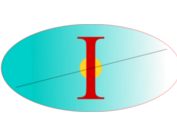Citation:
| ryb2004.pdf | 170 KB |
Abstract:
The combinatorial invariant and covariant are introduced as practical tools for analysis of conical intersections in molecules. The combinatorial invariant is a quantity depending on adiabatic electronic states taken at discrete nuclear configuration points. It is invariant to the phase choice (gauge) of these states. In the limit that the points trace a loop in nuclear configuration space, the value of the invariant approaches the corresponding Berry phase factor. The Berry phase indicates the presence of an odd or even number of conical intersections on surfaces bounded by these loops. Based on the combinatorial invariant, we develop a computationally simple and efficient method for locating conical intersections. The method is robust due to its use of gauge invariant nature. It does not rely on the landscape of intersecting potential energy surfaces nor does it require the computation of nonadiabatic couplings. We generalize the concept to open paths and combinatorial covariants for higher dimensions obtaining a technique for the construction of the gauge-covariant adiabatic-diabatic transformation matrix. This too does not make use of nonadiabatic couplings. The importance of using gauge-covariant expressions is underlined throughout. These techniques can be readily implemented by standard quantum chemistry codes.



